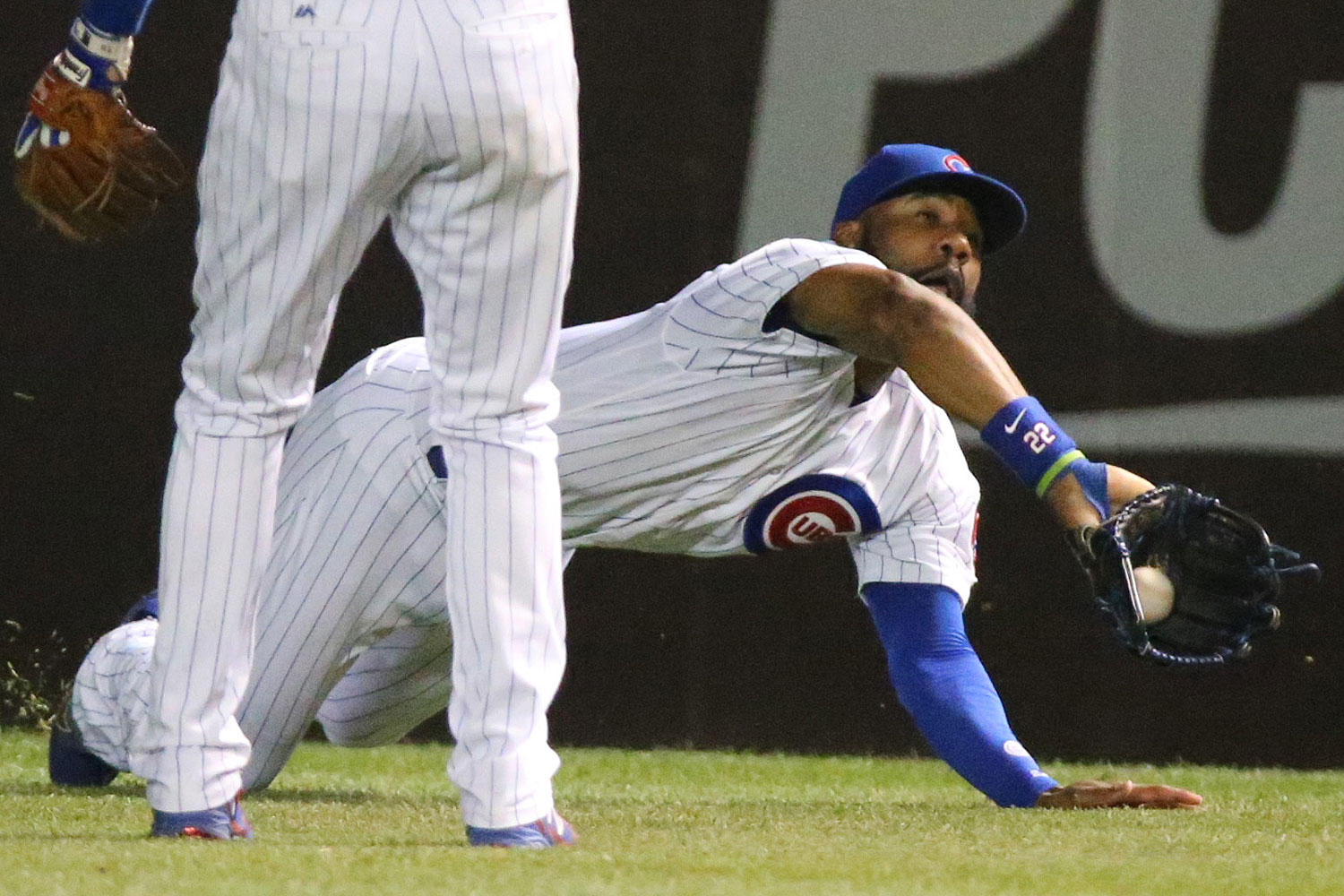Back in June, I noticed something quite remarkable about the Cubs, whose winning percentage at the time was an incredible .707: their batting average on balls in play was .249. That's very low, as the league average is generally around .300. In short, when a player hits a ball against the average team, it falls for a hit around a third of the time. For the Cubs, it was falling for a hit around a quarter of the time. That's a huge advantage.
At the time, the Cubs were on pace for the lowest BABIP since 2000, 11 points lower than the 2001 Seattle Mariners, who won 116 games.
The Cubs went into a bit of a funk, so their winning percentage is down to .641; if they finish with that, they'll win 103 games. Their BABIP? A still incredibly low .253. I was reminded of this by Mike Petriello, MLB.com's stats writer, who has a thorough piece this week on the team's incredible defensive performance. In short, their pitching has been worse this year, but their defense has been much better:
Last year, the Cubs had a 3.36 ERA, the third best in baseball, and a 3.30 FIP, the best in baseball. ("FIP" is Fielding Independent Pitching, an ERA-like measure that looks at what a pitcher can control, like walks, strikeouts and home runs, and ignores the other factors like defense or batted-ball luck that might affect his run prevention.) Those numbers are nearly identical, and show that the Cubs' pitchers were rightfully one of the game's best staffs.
This year, as we know, the Cubs have the best ERA, at 3.09, but that FIP has jumped all the way up to 3.80, as Cubs pitchers have walked more and allowed more home runs. (Most teams in baseball have allowed more home runs this year, of course.) That difference of .71 is among the 10 largest ERA and FIP differences of the past 100 seasons.
Their walk rate has gone way up, from 2.5 walks per nine innings to 3.1, about an additional baserunner every other inning. Last year they had the fifth-lowest walk rate in baseball; this year they've fallen to 17th. Jake Arrieta, who's gone from historically great to merely very good, is a major culprit; last year he walked about two batters every nine innings; this year, 3.5. By pitcher wins above replacement, Fangraphs gives them the fourth-best pitching staff in baseball; last year they were No.1, and about 10 percent better than the No. 2 Dodgers.
But last year, the Cubs had merely the ninth-best defense, per Fangraphs. The best team was the World Series champion Royals, who were far better than any other team. In 2016 the Cubs are number one and considerably better than the second-place Royals.
That change—not quite as good pitching, far superior defense—has worked out. Last year the Cubs gave up the fourth-fewest runs; this year not only have they given up the fewest runs, with 483, they've given up fifty fewer runs than the second-place Nationals.
It shouldn't come as a surprise. At the beginning of the year, it looked like the Cubs had greatly improved their defense. Addison Russell's brief stint in 2015 suggested he might be the best defensive shortstop in baseball, and he's come awfully close. Jason Heyward's the kind of outfielder that, as Tom Tango (until very recently a consultant to the Cubs) shows, can save 20 runs a season, making him a valuable acquisition despite his struggles at the plate.
.@JasonHeyward with the catch, @javy23baez with the assist.https://t.co/UBPN4r2BvW
— Chicago Cubs (@Cubs) September 13, 2016
Besides, it's not like Heyward's disappointing turn on offense has hampered the Cubs that much. Their offense is third behind the Red Sox (who get to play with a DH) and the Rockies (who get to play half their games 5,200 feet above sea level). It's a huge leap from 15th last year. Combine the three and you get a run differential of +226. If they can add 17 runs to that, they'll triple their run differential from last year.




